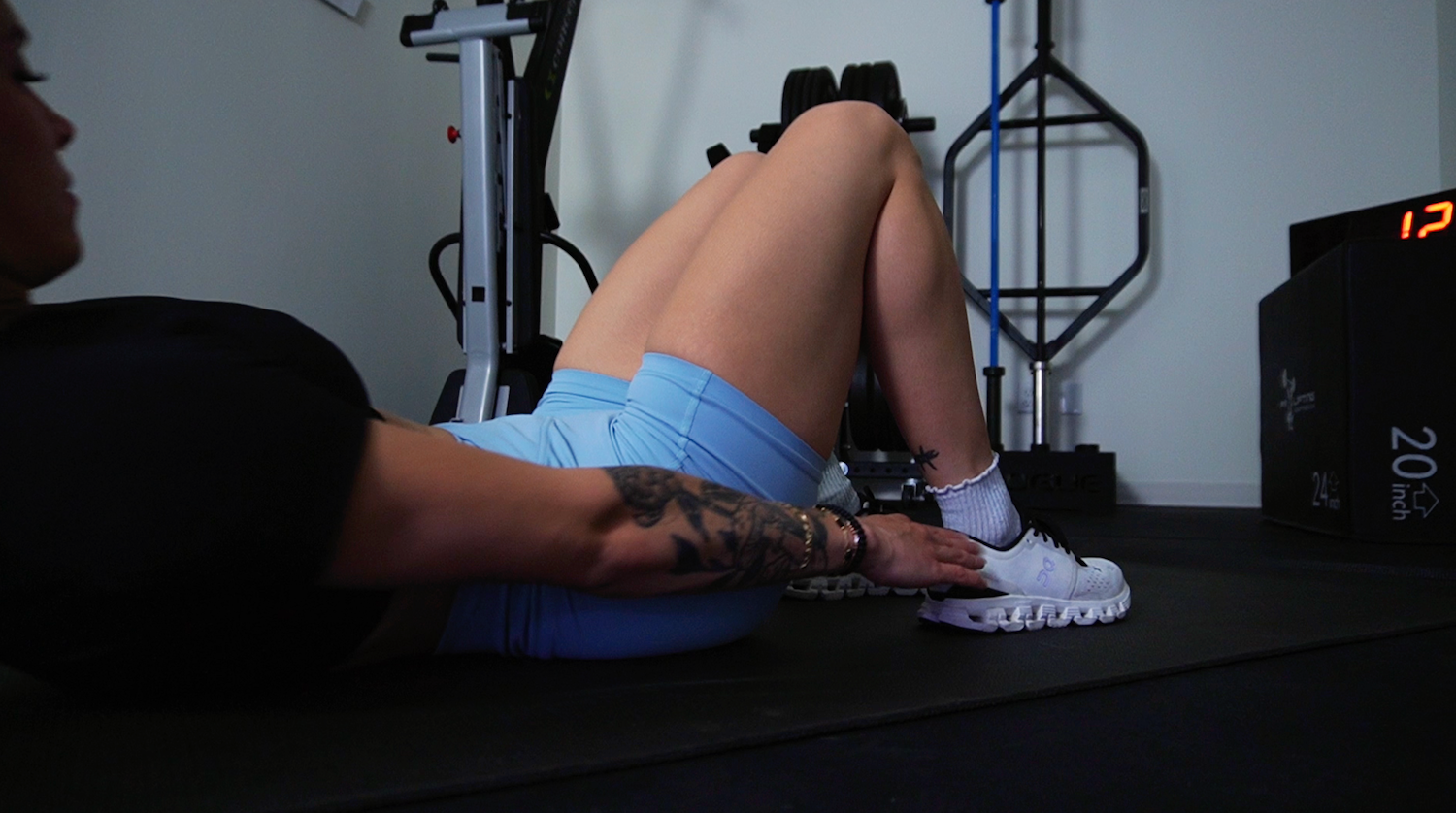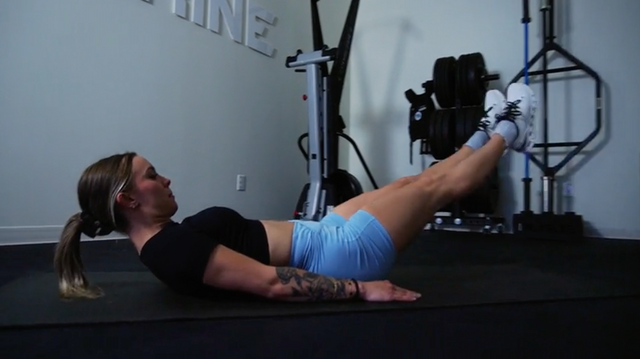Are you ready to transform your fitness routine and build a stronger core? Heel taps might just be your new go-to exercise! This simple yet effective movement engages your abdominal muscles, enhances balance, and contributes to overall stability. Whether you’re a seasoned athlete or a novice looking to elevate your wellness journey, mastering heel taps can significantly improve your workout regimen.
In this ultimate guide, we’ll walk you through everything you need to know about heel taps—from proper technique and key benefits to variations that keep the exercise challenging and enjoyable. Say goodbye to mundane workouts and hello to increased strength and control as you incorporate heel taps into your routine. Get ready to unlock your core’s potential and discover a new level of fitness!
Benefits of Heel Taps for Core Strength
Heel taps are an underrated yet powerful core exercise that deliver a wide range of benefits beyond simply working your abs.
1. Targets Lower Abdominals
One of the key benefits of heel taps is their direct focus on the lower abdominal muscles—an area that's typically difficult to isolate with other movements.
-
Helps build balanced core strength
-
Creates definition in the lower abs
-
Complements upper ab exercises for full-core engagement
2. Improves Core Muscle Endurance
Because heel taps involve continuous repetition, they keep your core engaged for an extended period.
-
Builds muscular endurance and stamina
-
Enhances athletic performance for sports and cardio
-
Supports longer training sessions with better control
3. Enhances Posture and Spinal Support
A strong core plays a vital role in posture. Heel taps strengthen the muscles that stabilize your spine.
-
Promotes better alignment
-
Reduces lower back strain
-
Supports overall functional movement and well-being
How Heel Taps Improve Balance
Balance is often overlooked, yet it’s foundational to strength, mobility, and injury prevention. Heel taps support balance training in multiple ways:
Strengthens Core for Stability
-
Engages deep stabilizing muscles that control your pelvis and spine
-
Helps maintain equilibrium during shifting movements
-
Enhances athletic agility and coordination
Activates Lower Body Muscles
Heel taps also recruit:
-
Hip flexors
-
Glutes
-
Leg muscles
These muscles work in unison to support posture and prevent wobbling or tipping, particularly when alternating legs under tension.
Improves Proprioception
Proprioception is your sense of body position in space. Heel taps help:
-
Train your nervous system to react to shifts in movement
-
Improve mind-muscle connection
-
Boost coordination for dynamic sports or daily activities
“Exercises that challenge stability and proprioception improve overall motor control and reduce injury risk.”
— Behm & Colado, Journal of Sports Science & Medicine
Proper Form and Technique for Heel Taps
To ensure effectiveness and avoid injury, perform heel taps with deliberate technique:
How To Heel Tap Step-by-Step Instructions
-
Start Position:
-
Lie flat on your back
-
Knees bent, feet flat
-
Arms at your sides, palms down
-
-
Engage Core:
-
Draw belly button toward spine
-
Lift head, neck, and shoulders slightly off the ground
-
-
Position Legs:
-
Raise feet off the floor
-
Knees bent at 90 degrees, shins parallel to the ground
-
-
Execute the Tap:
-
Lower your right heel to lightly tap the floor
-
Keep core engaged and lower back pressed into the mat
-
Return to start, repeat with left heel
-
Pro Tips
-
Avoid arching your lower back
-
Move slowly and with control
-
Don’t use momentum—focus on muscle contraction
-
If needed, keep your head and shoulders down to reduce strain
Common Mistakes to Avoid
While heel taps are a beginner-friendly core exercise, making small mistakes can reduce their effectiveness or lead to discomfort. Here’s what to watch out for:
1. Arching the Lower Back
One of the most frequent issues is letting your lower back lift off the floor.
-
Places unnecessary strain on the lumbar spine
-
Reduces core muscle activation
-
Increases risk of injury
Fix: Keep your lower back firmly pressed into the ground and engage your core throughout.
2. Using Momentum
Swinging your legs instead of controlling them diminishes the benefits of the movement.
-
Decreases time under tension
-
Lessens muscular engagement
-
Can lead to sloppy reps
Fix: Perform each rep with slow, controlled movement. If needed, reduce your range of motion.
3. Straining the Neck
Over-lifting the head and shoulders can cause tension in the neck and upper back.
-
Can lead to neck pain or discomfort
-
Shifts focus away from the core
Fix: Keep your gaze upward, lift only slightly, or support your head with your hands. You can also keep your head on the ground if needed.
Variations of Heel Taps for Different Fitness Levels
Heel taps can be easily modified for beginners or made more challenging for advanced athletes.
Beginner Variations
-
Modified Heel Taps: Keep head and shoulders on the floor
-
Limited Range of Motion: Tap halfway down rather than to the ground
These regressions maintain focus on the core while building strength safely.
Intermediate to Advanced Variations
-
Single-Leg Heel Taps: Keep one leg extended while tapping the opposite heel
-
Bicycle Heel Taps: Alternate heel taps while adding a bicycle crunch for upper body rotation
-
Plank Heel Taps: Perform heel taps from a plank position for full-body engagement
Combination Movements
Mix heel taps with other core exercises:
-
Heel Taps + Leg Raises
-
Heel Taps + Scissor Kicks
-
Heel Taps + Dead Bug Progressions
These compound movements create a dynamic core circuit that keeps your workouts challenging and engaging.
Incorporating Heel Taps into Your Workout Routine
To get the most out of heel taps, use them in different phases of your training session:
Warm-Up
-
Perform 2–3 sets of 10–15 heel taps
-
Helps activate your core before compound lifts
-
Improves neuromuscular control for better performance
Core Circuit (Main Set)
-
Pair with exercises like:
-
Planks
-
Russian Twists
-
Leg Raises
-
-
Use timed intervals (e.g., 30–45 seconds) or set reps (12–20 per side)
Cool-Down
-
Slow-paced heel taps can help stretch the abdominals
-
Supports recovery and reduces post-workout tightness
“Integrating a variety of movement patterns into warm-up and cool-down improves core function and flexibility.”
— Page & Frank, Strength and Conditioning Journal
Heel Taps vs. Other Core Exercises
There are countless core exercises to choose from, each offering unique benefits. Here’s how heel taps stack up against other popular movements:
1. Simple and Accessible
Unlike many core exercises that require equipment or advanced technique:
-
Heel taps can be done anywhere, anytime
-
Require no equipment
-
Are ideal for home workouts, travel, or limited space environments
2. Lower Risk of Neck and Back Strain
Compared to crunches or sit-ups:
-
Smaller range of motion means less spinal compression
-
Controlled movement reduces neck and back tension
-
Great for individuals with existing back or neck concerns
3. Emphasizes the Lower Abs
Heel taps specifically target the lower abdominal region, which is harder to isolate in traditional core exercises like:
-
Crunches (upper abs focused)
-
Sit-ups (hip flexor dominant)
-
Planks (isometric focus, not dynamic tension)
4. Improves Balance and Coordination
Heel taps challenge dynamic control, helping you improve:
-
Core stability during movement
-
Proprioception and body awareness
-
Functional strength for daily movement or sport
“Dynamic core exercises that challenge stability offer greater motor learning and balance benefits.”
— Behm & Anderson, European Journal of Applied Physiology
Tips for Progressing Your Heel Tap Practice
To get the most out of heel taps, it’s important to apply progressive overload and add variation:
1. Increase Volume
-
Start with 10–15 reps per side
-
Progress to 2–3 sets per session
-
Gradually increase reps or add more total sets
2. Add Variations
Challenge your core with advanced movements like:
-
Single-leg heel taps – extend one leg while alternating
-
Bicycle heel taps – integrate an upper body twist for oblique activation
-
Heel tap planks – incorporate the movement from a plank position for total core engagement
3. Introduce Resistance
Enhance muscle activation by adding load:
-
Hold a light dumbbell or medicine ball at your chest
-
Wear ankle weights to increase lower body demand
These progressions help improve core strength, control, and muscular endurance over time.
Conclusion and Next Steps for Core Strengthening
Incorporating heel taps into your workout routine is a smart, simple way to strengthen your core, improve posture, and boost total-body stability. Whether you're working out at home, in the gym, or on the road, this movement is:
-
Accessible for all levels
-
Easily adjustable with variations and resistance
-
Ideal for improving both abdominal strength and functional control
Key Reminders:
-
Focus on form and core engagement
-
Avoid common mistakes like back arching and using momentum
-
Progress gradually and explore new variations to stay challenged
With consistency and intentional training, heel taps can be a cornerstone of your core training strategy. Say goodbye to ineffective ab workouts—and hello to a more powerful, stable, and well-balanced core.
Find similar articles:
Fitness






